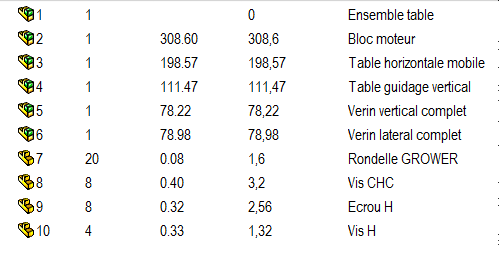Item no.

By choosing this type of column, you can request '' numbering.Detailed'', ''Flat'' or ''Linked to a nomenclature table'' as well as the start and increment of the numbering.
The numbering order can be set in the general options
Detailed numbering Flat numbering
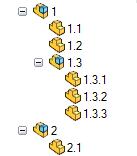

Numbering linked to a nomenclature table :
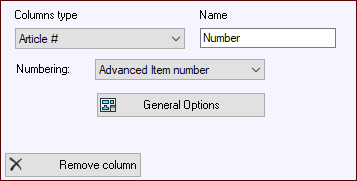
This numbering is chosen when a bill of materials is already present in the document being scanned (assembly drawing).
Indeed, the numbering may already have been modified and customized. SmartBom can retrieve this numbering.
To do this, you need to make a few adjustments. ''General optionsopens the following window:
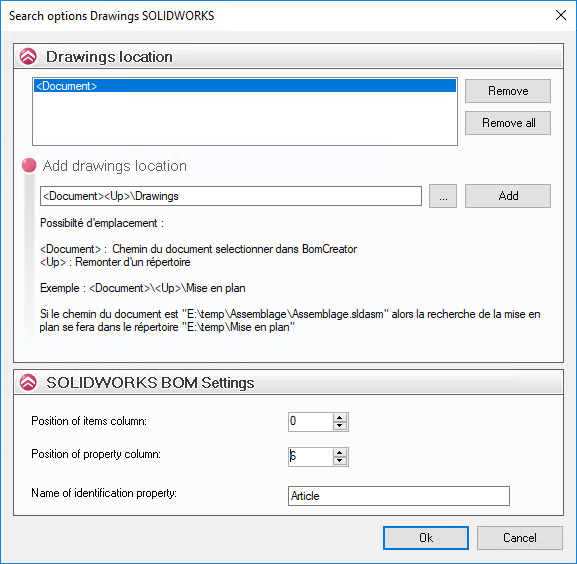
To select an existing directory, use the  . Once selected, add it to the "Add" list.
. Once selected, add it to the "Add" list.
The search can be specified for systematic locations.
- Retrieve the processed document file. This instruction is indicated by ''.<Document>'' in the path.
- ''<Up>'' goes back to the previous folder.
- ''Plans'' indicates the location file.
This instruction is used when files always have the same structure, to standardize searches.
Next, you need to specify the position of the '' column.ReferenceIf it's the first column, put ''.0''. Then indicate the position of the column containing the property value. This property must be present and unique in all files contained in the BOM. SmartBom uses this property to retrieve the number of the corresponding marker.
 When several components are present in sub-assemblies (use configurations: e.g. screws, library items, part families, etc.), SmartBom will stop at the first table component.
When several components are present in sub-assemblies (use configurations: e.g. screws, library items, part families, etc.), SmartBom will stop at the first table component.
Example :
In the drawing, I have a bill of materials in which I have changed the order of certain components (by moving them with the mouse).
 This layout must first be registered.
This layout must first be registered.
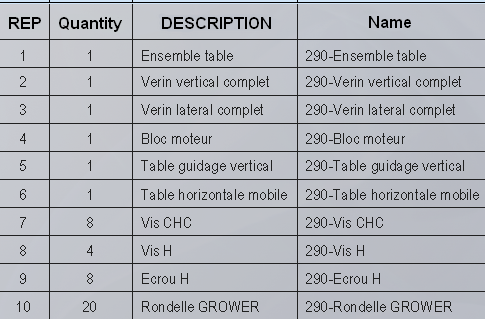
Result: The BOM requested in the tool SmartBom must retrieve this numbering. The sorting must be done, for example, on the property'''. Description'' positioned in the second column (starting with 0).
 Identical numbering.
Identical numbering.
Whereas if the type of numbering requested is ''...Detailed'' or ''FlatThe result is as follows:
